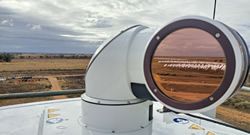Solar Under Storm III
The next chapter in designing hurricane-resilient PV systems in a world of increasing tropical storms. Solar Under Storm III is the next step forward to providing technical guidance to enhance solar system durability against Category 5 hurricanes, typhoons, and cyclones.
Design Considerations for Efficient and Effective Battery Energy Storage Installations
Designing effective and efficient energy storage infrastructure involves a careful balance of technical, environmental and human factors. Creating a thoughtful design not only improves the system's reliability but also increases its contribution to a sustainable future.
Effective Project Management in the Commercial Solar PV Industry: What It Really Takes!
As Project Delivery Manager at Astro Renewables I wanted to share a few of my own thoughts around the Project Management role in the commercial solar space and reflect on some of the skills I think make it work.
ADVANCING A SAFETY-FIRST SOLAR CULTURE
Terrasmart has always fostered a culture of safety, and we continually look for ways to raise our own bar. This year, we engaged our entire team in a centralized, weeklong, in-person training, going far beyond standard practices for safety training in the industry.
Eagleview One™ - AI and Precise 3D Models in One Easy Platform
By combining cutting-edge technology like high-resolution imagery and AI-driven analytics, it eliminates traditional silos in data and empowers industries to make more informed, data-driven decisions faster.
Harnessing Wind Intelligence to Safeguard Solar Arrays
Seeing the storm before it arrives can mean the difference between shutdown losses and uninterrupted solar yield. Beyond rattling panels or nudging trackers out of place, the wind can quietly rack up costs and downtime and even shorten the life of critical equipment.
Why On-site Data is Crucial for Solar Designers
Designers need a plethora of information to build a full plan set-most of which comes from an on-site survey. When Surveyors collect on-site information with drones and mobile apps, Designers can easily access everything they need to streamline plan set development.
Due Diligence 101-Part 4: Decoding Solar Farm System Design
This is the fourth in our series on important things to keep in mind when performing technical due diligence on a solar asset.
Due Diligence 101-Part 3: Performance Modeling for Existing Solar Arrays
This is the third in a series of blogs outlining important considerations when performing technical due diligence on a solar asset.
Due Diligence 101-Part 2: Choosing the Right Technology When Acquiring a Solar Farm
This is the second in a series of blogs outlining important considerations when performing technical due diligence on a solar asset.
Due Diligence 101-Part 1: Assessing the site of a solar array
This is the first in a series of blogs outlining important considerations when performing technical due diligence on a solar asset.
The Streamlined Solar Permitting Solution our Industry Needs
Permitting delays are one of the most problematic aspects of residential solar deployment. Solar projects are governed by a patchwork of laws, regulations, and standards created by a host of governmental entities regarding zoning, construction, and more.
Terabase Energy Completes First Commercial Deployment of Terafab™ Solar Construction Automation System
The benefits demonstrated by this project underscore the transformative potential of automation in advancing solar construction practices, enabling us to accelerate and de-risk our project pipeline
Aerial Thermography Findings from the Field: The Lesser-Known Impact of Shading on Power Production
While each instance of shading is unique and can affect power production to varying degrees, there has been little investigation into whether shading of a single string happens in isolation, or whether it also affects neighboring, non-shaded strings and modules.
Using Digital Twins to Improve Solar Farms
"Utilizing a digital twin changes the picture by minimizing the impact of anomalies in the short term, with a seamless path to restoring power. We think of a digital twin as a ledger that provides an auditable system of record for solar assets that will last 25+ years."
Records 1 to 15 of 53
Featured Product

Quality assurance in the manufacturing industry
Efficiency and precision with CSP software. In the highly competitive world of manufacturing, quality assurance is a critical factor for success. CSP offers you state-of-the-art software solutions specifically designed to ensure the highest standards of quality assurance in the manufacturing industry.















